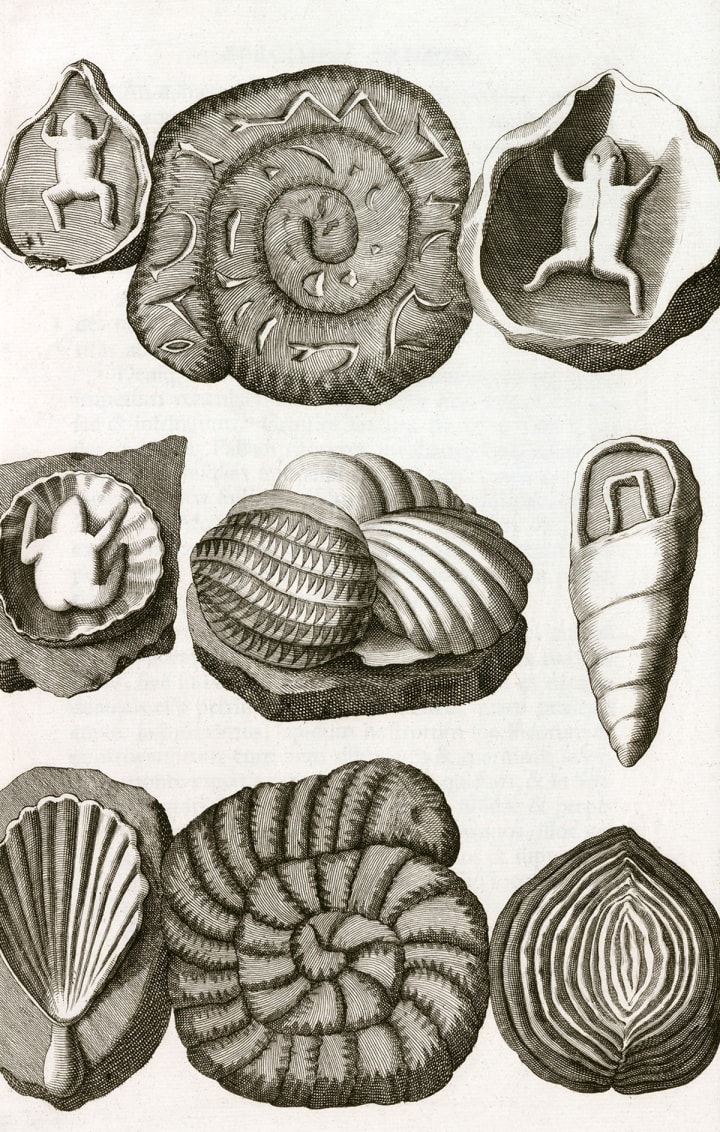Most Deceptive Scientific Frauds
The pressure of scientific disciplines can be a double-edged sword, driving some to commit the most deceptive scientific frauds.

There are so many problems in the world that demand solving, and scientific research is the source for such desired lifesaving innovation. However, this pressure can be a double-edged sword. Scientists are inspired to work hard to release quality research, but this can also lead to situations where people will stoop to deception to achieve fame. Fabricating data to prove a theory is an easy way to cut corners, after all, and peer review has its limitations.
Since scientists are a trusted source for new research, a large percentage of the general public will implicitly accept the findings without question and find themselves fooled. Often, scientific fraud is discovered later by other scientists, and the deception is finally brought to the public’s attention.
The following is a list of some of the most deceptive scientific frauds unveiled throughout history. This list will certainly remind everyone to fact check what they read—even something branded as “scientific” might be a hoax in the end.
The Tasaday Tribe Hoax

Image via Best Hoaxes and Pranks
The Tasaday tribe was discovered living in total isolation on the island of Mindanao in 1971. Manuel Elizalde, a government minister in the Philippines, found them using stone tools and living in caves in an altogether primitive lifestyle. The discovery of a stone-age society in the late 20th century startled anthropologists and was featured on television, inspired a best-selling book, and made the cover of National Geographic. The whole tribe was presented as a peaceful Garden of Eden. Scientists wanted to see the tribe for themselves, but when they tried to visit the island the Philippine president declared it a reserve and banned visitors from entering.
The president wasn’t around forever, though. Once he was out of office in 1986, journalists traveled to Mindanao and discovered the Tasaday tribe living in houses and wearing jeans. The people explained that they had lived in caves because they received payment to do so from Elizalde. Meanwhile, back in 1983, Elizalde had fled the country after stealing millions of dollars from a foundation for the Tasaday. That’s more than a decade of the world believing in the claim that a society untouched by the modern world existed in a perpetual stone-age on an island.
But that’s not even the end of this. There was a rebuttal by Elizalde and the tribe that the fact that they were a hoax was in itself a hoax. Pro-Tasaday researcher Lawrence Reid of the University of Hawaii lived with the tribe for years in the 1990s and produced field work that concluded their language was real. His evidence supposed that they had been living on their own for around 150 years and did indeed live a very primitive existence, if not stone-age primitive.
Schön’s Scandal

Image via Online College Courses
From 1998 to 2001, a young German researcher from New Jersey’s Bell Laboratories named Jan Hendrik Schön published multiple papers in the journals Science and Nature concerning advanced aspects of electronics. The content of these papers convinced people that Schön was a rising star in the scientific field of physics and nanoelectronics. Dazzling everyone with his youth and talent, he was even considered for a Nobel Prize.
People grew curious. Researchers throughout the world failed to produce the same results. Was Schön’s massive research output and brilliance for real? His colleagues’ curiosity peaked when Schön published the same exact graph in two different papers with different topics. A committee then assembled by Bell Labs discovered that on at least 16 different occasions the research data in his papers had been fabricated. He had erased the raw data from his computer and much of the plotted graphical data came from mathematic formulas rather than actual experiment results.
He admitted that some of the data had been falsified. This outing resulted in public embarrassment for his colleagues, Bell Laboratories, and both journals’ editorial staffs for failing to notice the falsification. The scientific community proceeded to heatedly discuss the level of responsibility scientific papers had in giving a thorough peer review that included spotting fraud.
The Lying Stones

Image via Stuff You Missed in History Class
Before the popularity of dinosaurs and the scientific assertion that they did indeed once populate the earth, a Bavarian scientist named Dr. Johann Beringer at the University of Würzburg sought buried fossils as proof of such prehistoric beings. But his belief came more from religion than science, as he thought that fossils were created by God to test an individual’s faith, rather than actual bodily remains. He sought to prove that such God-made fabrications existed.
In 1726, Beringer unearthed what appeared to him to be fossils of birds, lizards, moons, and stars, verifying his beliefs. However, these fossils were fake and had been planted by two bitter colleagues, who also buried tablets along with them that bore inscriptions of the word God in Hebrew and Arabic. Failing to notice that this was a joke played on him by his colleagues, Beringer published these findings in a book titled Lithographia Wirceburgensis that outlined his theory. He conceded that there did even appear to be chisel marks on the fossil stones, but argued against detractors that it had been God who wielded the chisel.
When he discovered another small tablet later that had his own name on it, he finally realized what was really going on. But his book had already been published—and was now a bestseller. Beringer responded to this trick by suing the hoaxers, but the attention this drew brought all three of them scandal and ruin. This scientific fraud ended up being the result of the scientist’s own silly failure to look into his own findings
The Piltdown Man

Image via Awesome Talks
In 1912, fragments of a skull and jawbone were discovered in Piltdown, England by lone collector Charles Dawson. He took the fragments to the geological department keeper at the British Museum, Arthur Woodward. After a reconstruction of the skull, Woodward claimed that the remains were from a previously undiscovered early human that linked human beings with apes—the theorized “Missing Link.” The fossils led to the creature receiving an official Latin name: Eoanthropus Dawsoni.
The scientific fraud was exposed in 1953. After closer inspection, an investigation found the jawbone belonged to an orangutan while the skull came from an adult human, with some filed chimpanzee teeth mixed in. That’s a lapse of 45 years before anyone officially denounced the find as a deception.
The fraudulent discovery had ample time to affect the developing research on human evolution. For instance, the Piltdown man skull had provided evidence for the idea that the human brain grew before the jaw changed enough to indicate consumption of new food types. The whole hoax is also cited by creationists as exemplary evidence for the deceptive abilities of paleontologists. Overall, this was a massive time-waster and setback for evolutionary science.
The Discovery of Cold Fusion

Image via Extreme Tech
Imagine, the ultimate solution to the issue of power sources: a limitless and eco-friendly supply of energy. Fusion power itself requires high amounts of energy in order to fuse the nuclei, but what if that wasn’t the case? Enter the discovery of low-energy use cold fusion, announced in 1989 by electrochemists Stanley Pons and Martin Fleischmann. They published their report of their successful findings in the Journal of Electroanalytical Chemistry and made the announcement of workable cold fusion in a press release. The two claimed cold fusion would be the solution to environmental problems and the question of clean energy.
They insisted they had confirmed the results in their experiments dozens of times. They also purported that this had been achieved with merely a glass electrolytic cell, heavy water, and palladium and platinum electrodes. Meanwhile, their paper contained very little details on how this was specifically achieved.
All over the world, scientists tried to replicate the results. All data consistently turned up negative. Several months passed, and popular science journals such as Science and Nature published the negative results and criticisms of claims of cold fusion. All this attention led to the United States Department of Energy organizing a panel to review all cold fusion research in pursuit of conclusive data. The result was that no convincing evidence existed. In the end, the announcement and publications excited the world but the conclusive data was just a phantom.
The Fraud of Yoshitaka Fujii

Image via MaxiSciences
Between the years 1993 and 2011, the anesthesiologist and ophthalmologist researcher Yoshitaka Fujii published over 200 papers on the effects of drugs that decreased nausea post-surgery in clinical trials. Since their publication, 183 have been retracted. In reality, Fujii completely fabricated the data for at least 171 of the papers—an absolutely astonishing amount of completely false data.
Although Fujii began publishing fake datasets in 1993, it wasn’t until 2000 that he was called out by a fellow scientist for fraudulence, his name appearing in a letter to the editor of the journal Anesthesia & Analgesia written by anesthetist Peter Kranke and others. They said Fujii’s data just looked too neat, too convenient. But this wasn’t enough, and he was able to skirt by publishing falsified numbers until 2011, after investigations concluded that much of the data in his many papers had been fabricated.
This mass retraction of scientific research is record-breaking, now called one of the largest in the history of scientific literature. This egregious scientific misconduct led to Fujii’s 2012 dismissal from his associate professor position at the Toho University of Medicine in Tokyo. And this leaves us with the question: how did his deception go undetected for so long?
About the Creator
Futurism Staff
A team of space cadets making the most out of their time trapped on Earth. Help.






Comments
There are no comments for this story
Be the first to respond and start the conversation.